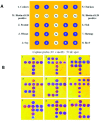Chemical and Biological Sensors for Food-Quality Monitoring and Smart Packaging
- PMID: 30332833
- PMCID: PMC6210272
- DOI: 10.3390/foods7100168
Chemical and Biological Sensors for Food-Quality Monitoring and Smart Packaging
Abstract
The growing interest in food quality and safety requires the development of sensitive and reliable methods of analysis as well as technology for freshness preservation and food quality. This review describes the status of chemical and biological sensors for food monitoring and smart packaging. Sensing designs and their analytical features for measuring freshness markers, allergens, pathogens, adulterants and toxicants are discussed with example of applications. Their potential implementation in smart packaging could facilitate food-status monitoring, reduce food waste, extend shelf-life, and improve overall food quality. However, most sensors are still in the development stage and need significant work before implementation in real-world applications. Issues like sensitivity, selectivity, robustness, and safety of the sensing materials due to potential contact or migration in food need to be established. The current development status of these technologies, along with a discussion of the challenges and opportunities for future research, are discussed.
Keywords: food freshness; food quality; sensors; smart packaging.
Conflict of interest statement
The authors declare no conflict of interest.
Figures










References
-
- Turner A., Karube I., Wilson G.S. Biosensors: Fundamentals Applications. Oxford University Press; New York, NY, USA: 1987.
-
- Viswanathan S., Radecka H., Radecki J. Electrochemical biosensors for food analysis. Monatsh. Chem. Chem. Mon. 2009;140:891. doi: 10.1007/s00706-009-0143-5. - DOI
Publication types
Grants and funding
LinkOut - more resources
Full Text Sources
Other Literature Sources

